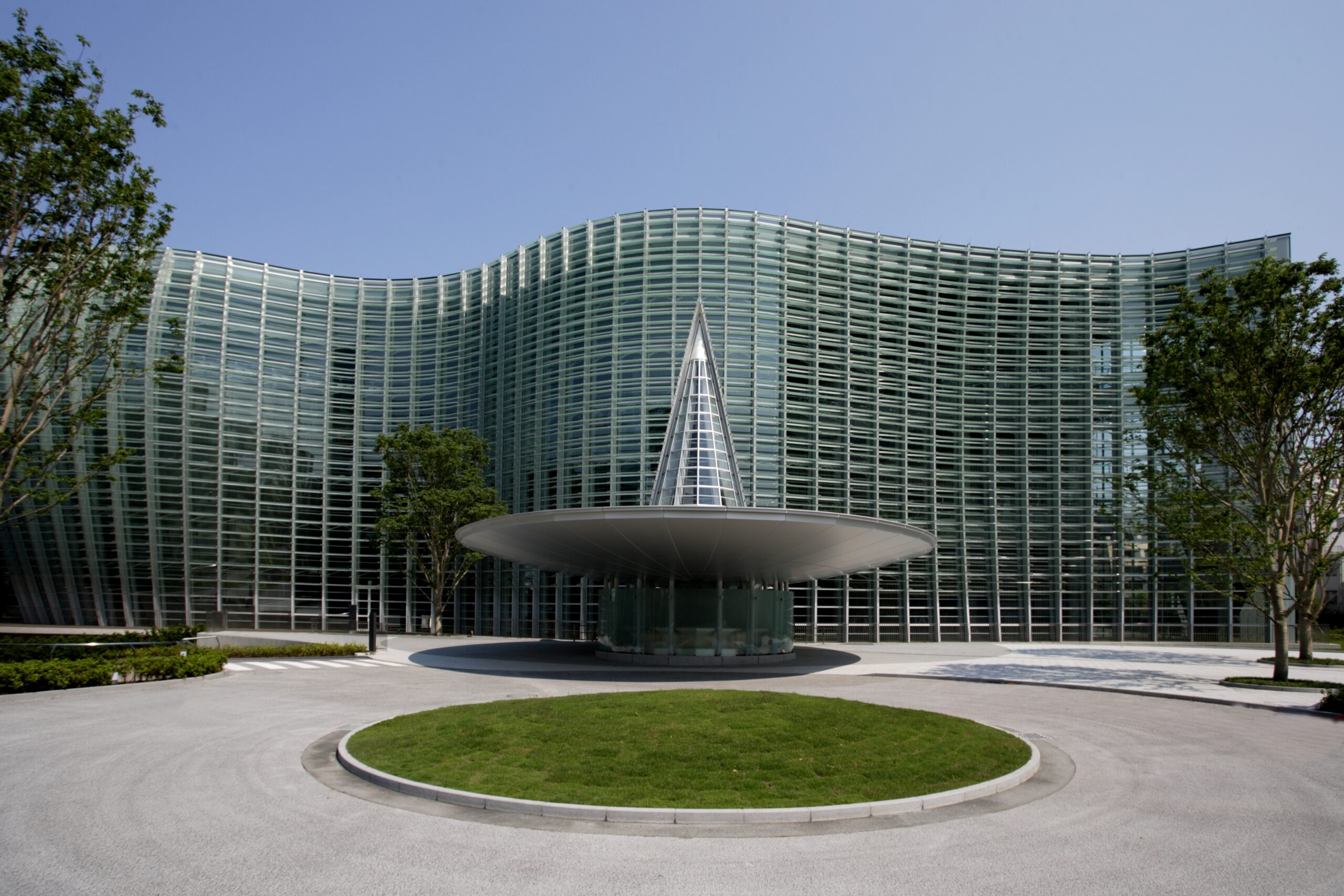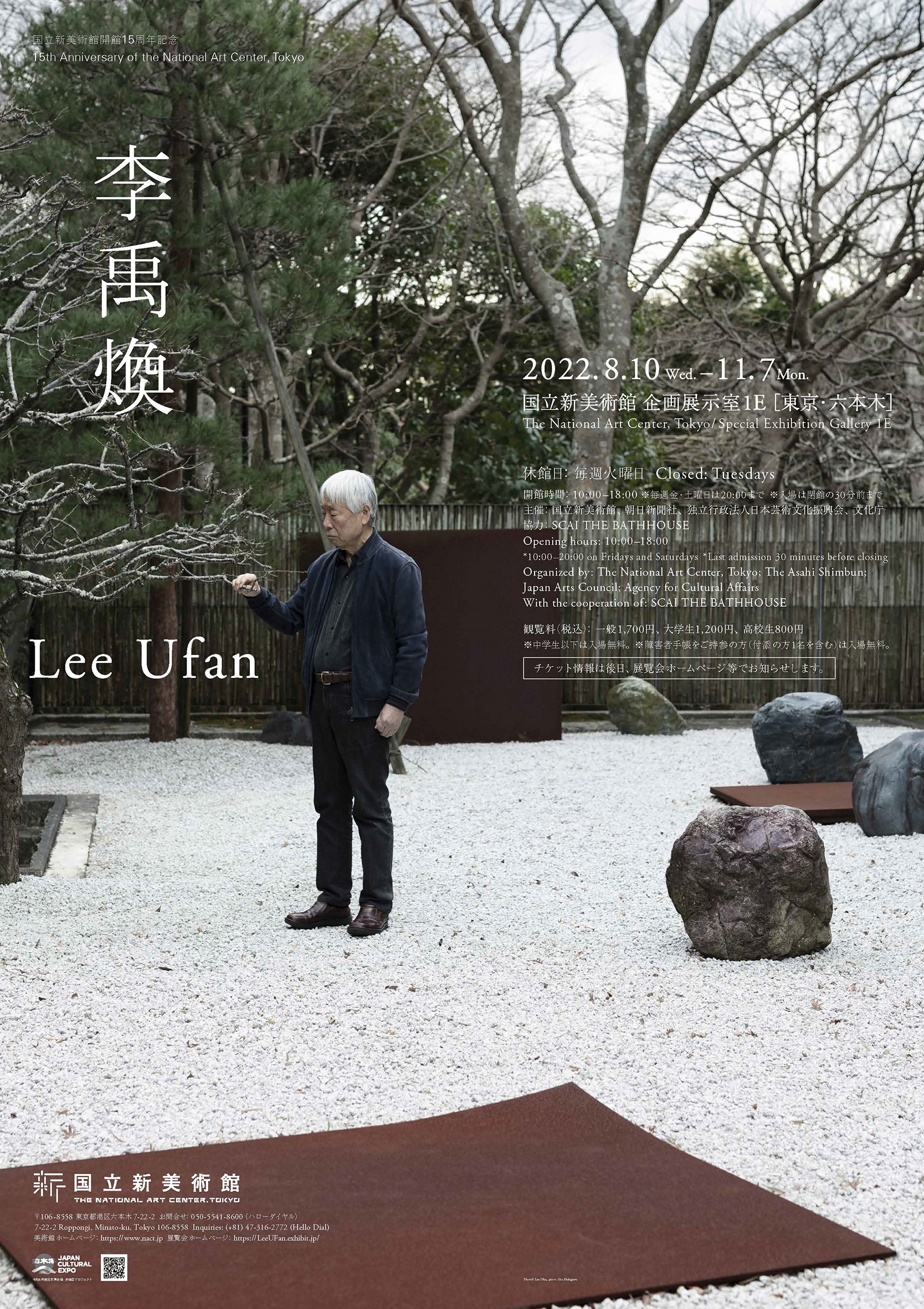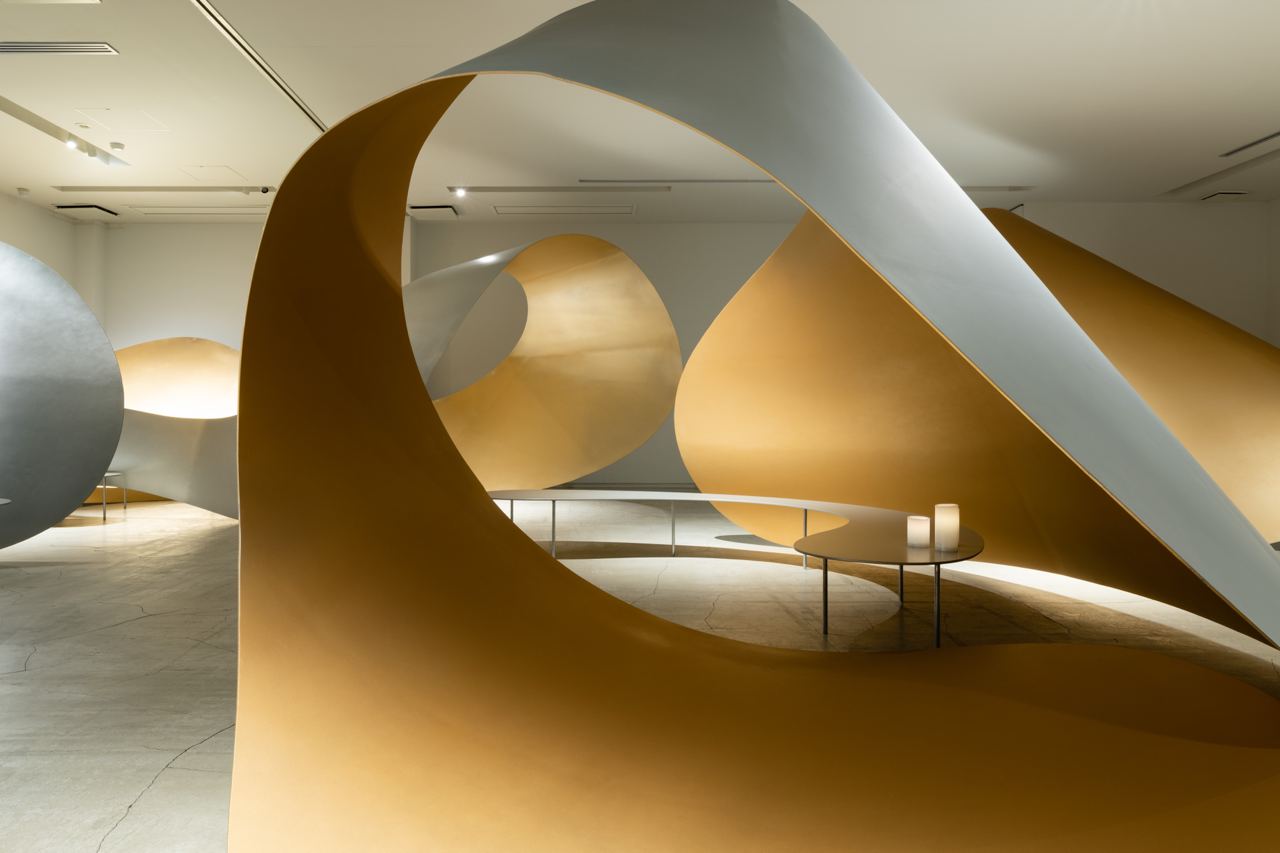Designed by Kisho Kurokawa following the concept of “an art center surrounded by green spaces,” the facade of the NACT is a beautiful wavelike glass wall that creates a unique appearance with its conical main entrance. From the lobby on the first floor (1F), visitors can enjoy the views through this curtain-like wall during all four seasons. Additional facilities include a restaurant, three cafes, and museum shops.

Lee’s work liberates art from the world of images, subjects, and meaning, and raises questions about the relationship between things, and things and people in an effort to show that the entire world exists synchronically and is mutually related.
The exhibition assembles Lee’s most important works, including everything from his earliest pre-Mono-ha pieces, which consider the problem of vision; the “Relatum” series, which challenges the existing concept of sculpture; and his highly spiritual paintings, which create a sense of a tranquil rhythm. In addition to showcasing Lee’s previous works, enabling visitors to trace the trajectory of his artistic practice, the exhibition will also include a selection of his latest ground-breaking efforts.








